calsfoundation@cals.org
Elkins (Washington County)
| Latitude and Longitude: | 36º00’05″N 094º00’30″W |
| Elevation: | 1,217 feet |
| Area: | 3.87 square miles (2020 Census) |
| Population: | 3,602 (2020 Census) |
| Incorporation Date: | February 19, 1964 |
Historical Population as per the U.S. Census:
|
1810 |
1820 |
1830 |
1840 |
1850 |
1860 |
1870 |
1880 |
1890 |
1900 |
|
– |
– |
– |
– |
– |
– |
– |
– |
– |
– |
|
1910 |
1920 |
1930 |
1940 |
1950 |
1960 |
1970 |
1980 |
1990 |
2000 |
|
– |
– |
– |
– |
– |
– |
418 |
597 |
692 |
1,251 |
|
2010 |
2020 |
|
|
|
|
|
|
|
|
|
2,648 |
3,602 |
|
|
|
|
|
|
|
Washington County’s community of Elkins (comprising the former Harris and Hood communities) borders Arkansas Highway 16, the entrance to the “Pig Trail,” a scenic drive in the Ozarks. Two tributaries of the White River flow through the town, providing excellent canoeing, fishing, and swimming. Nearby are the Ozark National Forest and the Ozark Highlands National Recreation Trail. Elkins has numerous antebellum homes and the one-lane bridge on Mount Olive Road that was a centerpiece of the 1982 television miniseries The Blue and the Gray.
There is evidence of prehistoric settlement in the area, most notably in a mound complex commonly dubbed the Elkins Mounds. This Mississippian Period complex likely consisted of five mounds originally, though one has since been destroyed. Some archaeologists have speculated that the mounds were arranged for alignments with the rising and setting sun at the solstices and equinoxes, but not enough study has been carried out to determine this for certain.
Among the first families in the area were the Boone family, which settled in 1830, and the Maguire family, after whom the settlement of Maguiretown (Washington County) took its name. However, the area remained sparsely settled until the arrive of the railroad later in the century. In 1886, Hugh F. McDanield, a railroad-tie contractor, surveyed a rail line from Fayetteville (Washington County) to St. Paul (Madison County) and procured the right-of-way. He then interested the St. Louis–San Francisco Railway Company (Frisco) in the proposed new road, and they undertook its construction. Goodspeed’s 1889 history of the area reported that Benjamin Franklin Johnson, a resident of the Harris community living on the Middle Fork of the White River, donated hundreds of dollars to aid in the construction of the railroad. By 1889, the line had been completed to St. Paul with the intention that it continue to Little Rock (Pulaski County). The Johnson Sawmill at Elkins was located adjacent to the St. Paul branch of the Frisco Railroad. Ayer and Lord Tie Company bought 6 million feet of lumber yearly, not including 500,000 to 700,000 railroad ties and piling timbers for construction. This provided jobs for residents and a market for timber that landowners cut from their property.
In 1888, John Sword became the first postmaster in the Harris community; the Harris post office operated from 1888 to 1957. The post office in Hood opened in 1885. Hood later changed its name, becoming Elkins in 1892.
One of the best-known citizens of Elkins is James Cortez Hoover, who served in World War I. Hoover was an African American born when Elkins was still known as Harris.
Elkins is recorded as having a school as early as 1877. The present-day schools are built on land that had been purchased from James F. Hood for $275 on July 17, 1913. A two-story building served both elementary and secondary classes until it was outgrown and later considered unsafe. In 1937, students received free textbooks for the first time.
In 1949, many of the smaller school districts were consolidated with Elkins. Previously, Harris had consolidated with Elkins in 1925 and Strain (Washington County) in 1926. During the 1949–50 school term, a new gymnasium was completed while Fred Starr was superintendent. The old building was torn down in the 1950s. The second gymnasium was torn down around 2013.
More than twenty businesses are located in the Elkins business district, with the famous Terra Studios “Arkansas Bluebird of Happiness” factory a short distance east of the city limits. Other businesses include two banks, Arvest and Chambers; various construction companies; and several retail outlets. Several churches are located in Elkins, including First Baptist Church, White River Fellowship, Harris Baptist Church, Church of Christ, Full Gospel Church, and Elkins Community Church. Elkins residents also enjoy a senior community center with an attached library. The 2009–10 school term had an enrollment of 1,175 students spread over four campuses: a high school, a middle school, and two elementary schools. The student population is made up of diverse ethnic groups including Latino and Asian families living in Elkins.
For additional information:
History of Benton, Washington, Carroll, Madison, Crawford, Franklin and Sebastian Counties, Arkansas. Chicago: Goodspeed Publishing Co., 1889.
History of Washington County, Arkansas. Springdale AR: Shiloh Museum, 1989.
School Days, School Days…The History of Education in Washington County, 1830–1950. Fayetteville, AR: Washington County Retired Teachers Association, 1986.
Mary Ellen Johnson
Springdale, Arkansas
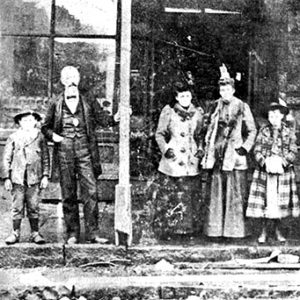 Conner Grocery
Conner Grocery 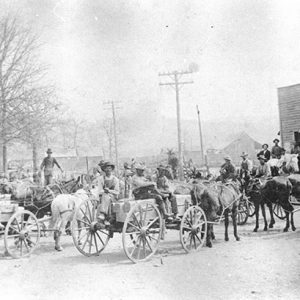 Elkins in 1903
Elkins in 1903 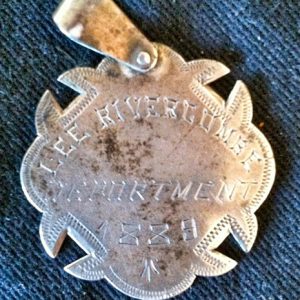 Elkins School Medal
Elkins School Medal 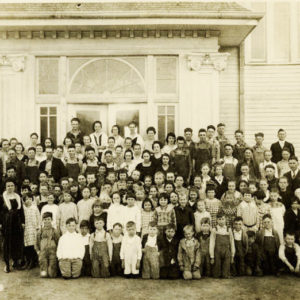 Elkins School
Elkins School 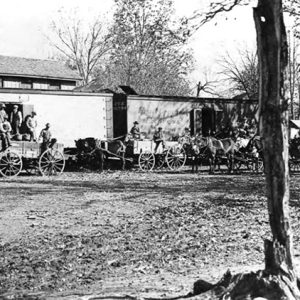 Loading Apples
Loading Apples  Swift House
Swift House 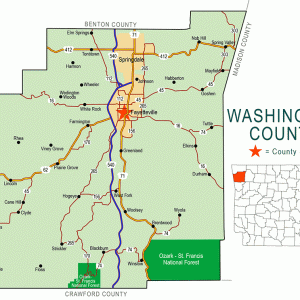 Washington County Map
Washington County Map 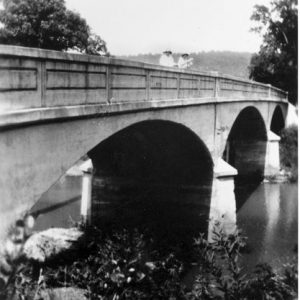 White River Bridge at Elkins
White River Bridge at Elkins 




I’ve just gotten curious as to where my name came from. We were still living in Harrison in 1964, but I’d never heard of Elkins until years later.